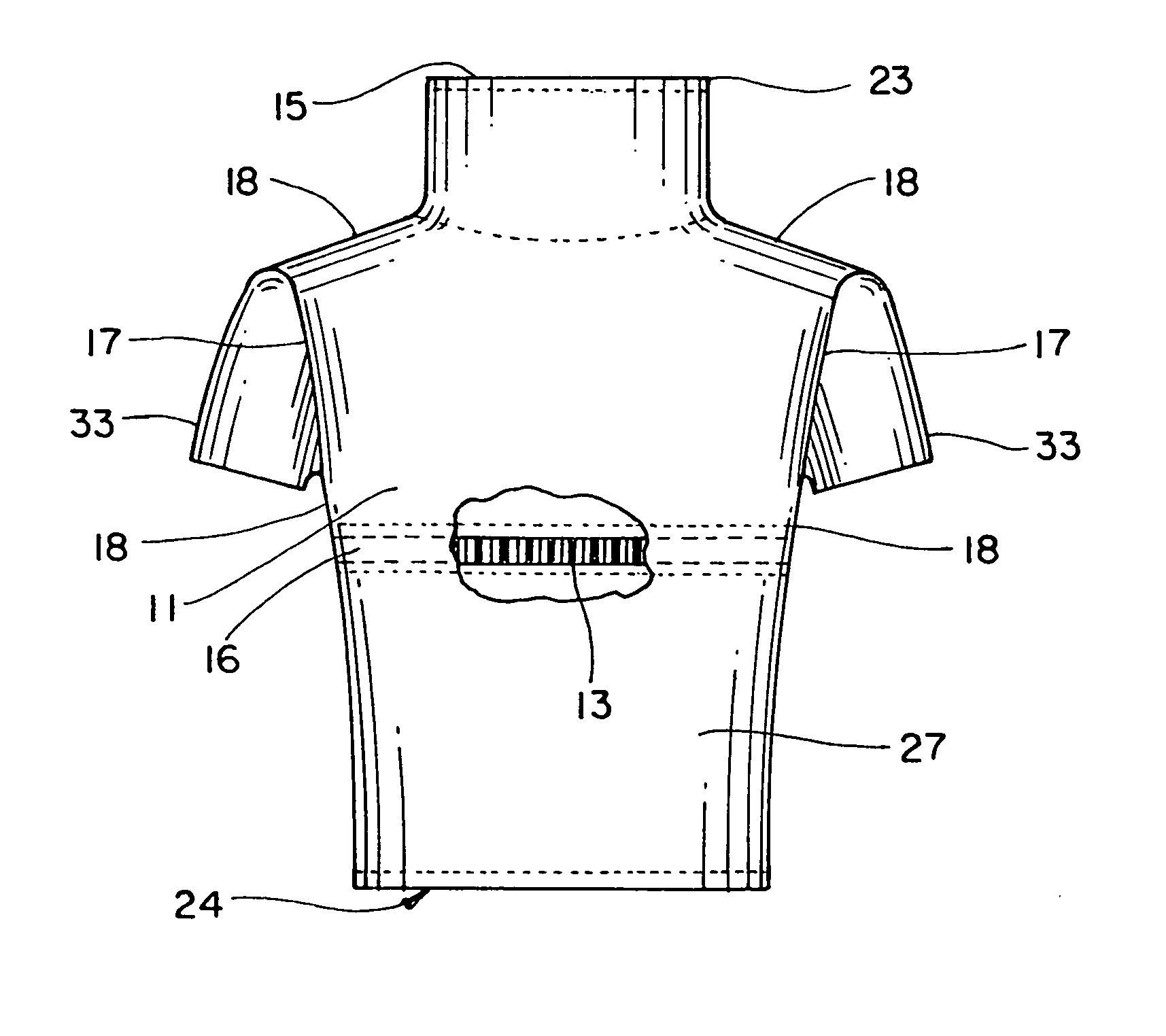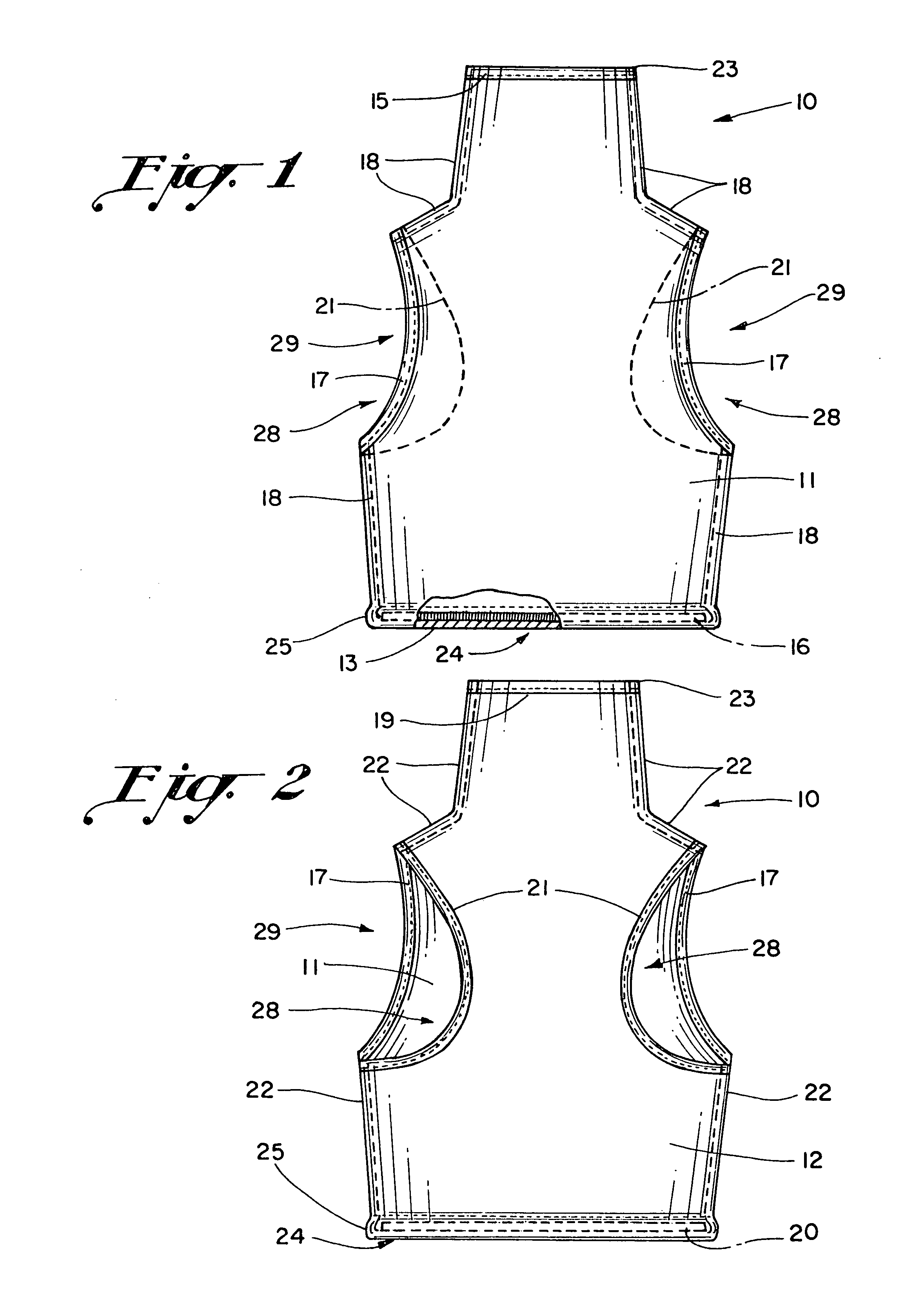Thermally-insulative, breast-supportive undergarment
a technology of breast support and undergarment, which is applied in the direction of protective garments, blouses, brassieres, etc., can solve the problems of increasing the rate of heat loss from the body, limited ability of the human body to adapt to varying environmental conditions, and distinct discomfort, so as to achieve the effect of effectively insulate the upper torso region
- Summary
- Abstract
- Description
- Claims
- Application Information
AI Technical Summary
Benefits of technology
Problems solved by technology
Method used
Image
Examples
Embodiment Construction
[0041]Referring now to the drawings, the preferred embodiment of the present invention generally concerns a thermally-insulative, breast-supportive undergarment 10 or brassiere as generally illustrated and referenced in FIGS. 1-3, and 4-5. Thermally-insulative, breast-supportive undergarment 10 preferably comprises an anterior fabric portion 11 as illustrated and referenced in FIGS. 1-15; a posterior fabric portion 12 as illustrated and referenced in FIGS. 2, 3, 6, and 11-14; and an elastic band member 13 as illustrated and referenced in FIGS. 1, 7, and 9-11. Anterior fabric portion 11 and posterior fabric portion 12 each preferably comprise or are constructed from thermally-insulative fabric materials. In this regard, excellent results have been obtained when anterior fabric portion 11 and posterior fabric portion 12 comprise or are constructed from POLARTEC® brand fleece type fabric material. POLARTEC® brand fleece is the preferred type of material used in the construction or asse...
PUM
 Login to View More
Login to View More Abstract
Description
Claims
Application Information
 Login to View More
Login to View More - R&D
- Intellectual Property
- Life Sciences
- Materials
- Tech Scout
- Unparalleled Data Quality
- Higher Quality Content
- 60% Fewer Hallucinations
Browse by: Latest US Patents, China's latest patents, Technical Efficacy Thesaurus, Application Domain, Technology Topic, Popular Technical Reports.
© 2025 PatSnap. All rights reserved.Legal|Privacy policy|Modern Slavery Act Transparency Statement|Sitemap|About US| Contact US: help@patsnap.com



